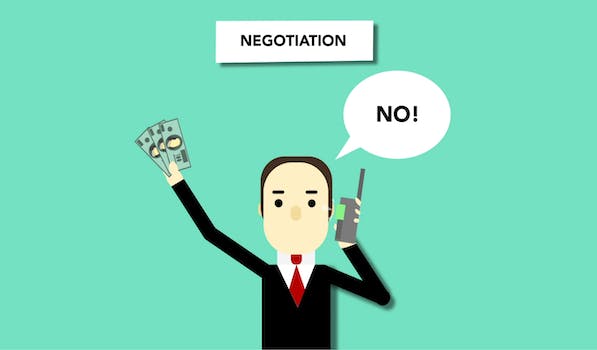How To Start A Business Idea
“From idea to reality: A step-by-step guide to launching your own business.”
Introduction
Starting a business idea can be an exciting and rewarding experience. However, it can also be overwhelming and challenging. In order to successfully launch a business, it is important to have a clear plan and strategy in place. This guide will provide some tips and steps to help you get started on your entrepreneurial journey.
Conducting Market Research
Starting a business can be an exciting and rewarding experience, but it can also be overwhelming and challenging. One of the most important steps in starting a business is conducting market research. This process involves gathering and analyzing information about your target market, competitors, and industry trends. By conducting thorough market research, you can gain valuable insights that will help you make informed decisions about your business idea.
The first step in conducting market research is to define your target market. This involves identifying the specific group of people who are most likely to buy your product or service. You can do this by analyzing demographic data such as age, gender, income, and location. You can also conduct surveys or focus groups to gather more detailed information about your target market’s needs, preferences, and behaviors.
Once you have defined your target market, you need to research your competitors. This involves identifying other businesses that offer similar products or services and analyzing their strengths and weaknesses. You can do this by visiting their websites, reading customer reviews, and analyzing their marketing strategies. By understanding your competitors, you can identify opportunities to differentiate your business and offer unique value to your customers.
In addition to researching your target market and competitors, you also need to stay up-to-date on industry trends. This involves monitoring changes in consumer behavior, technology, and regulations that may impact your business. You can do this by reading industry publications, attending conferences and trade shows, and networking with other professionals in your industry.
Once you have gathered and analyzed all of this information, you can use it to make informed decisions about your business idea. For example, you may decide to adjust your product or service to better meet the needs of your target market, or you may identify a gap in the market that you can fill with a unique offering. You may also decide to adjust your pricing or marketing strategy based on your competitors’ strengths and weaknesses.
In addition to helping you make informed decisions, conducting market research can also help you secure funding for your business. Investors and lenders will want to see that you have a solid understanding of your target market, competitors, and industry trends before they invest in your business. By demonstrating that you have done your homework, you can increase your chances of securing funding and growing your business.
In conclusion, conducting market research is a critical step in starting a business. By gathering and analyzing information about your target market, competitors, and industry trends, you can make informed decisions about your business idea and increase your chances of success. While it may be time-consuming and challenging, the insights you gain from market research can be invaluable in helping you build a successful business.
Creating a Business Plan

Starting a business can be an exciting and rewarding experience, but it can also be overwhelming and challenging. One of the most important steps in starting a business is creating a business plan. A business plan is a written document that outlines your business idea, goals, strategies, and financial projections. It serves as a roadmap for your business and helps you stay focused and organized.
The first step in creating a business plan is to define your business idea. What product or service will you offer? Who is your target market? What makes your business unique? These are all important questions to consider when defining your business idea. It’s important to do market research to determine if there is a demand for your product or service and to identify your competition.
Once you have defined your business idea, the next step is to set goals for your business. What do you want to achieve in the short-term and long-term? Your goals should be specific, measurable, achievable, relevant, and time-bound. For example, your short-term goal might be to launch your product within six months, while your long-term goal might be to expand your business to other cities within five years.
After setting your goals, you need to develop strategies to achieve them. This includes identifying your marketing and sales strategies, as well as your operational and financial strategies. Your marketing and sales strategies should outline how you will reach your target market and promote your product or service. Your operational strategies should outline how you will manage your business, including your staffing, inventory, and production processes. Your financial strategies should outline how you will fund your business and manage your finances.
Once you have developed your strategies, you need to create financial projections for your business. This includes creating a budget, forecasting your revenue and expenses, and projecting your profits and losses. It’s important to be realistic when creating your financial projections and to consider factors such as market trends, competition, and economic conditions.
Finally, you need to write your business plan. Your business plan should be clear, concise, and well-organized. It should include an executive summary, a description of your business, your market analysis, your marketing and sales strategies, your operational and financial strategies, and your financial projections. You should also include any supporting documents, such as resumes, financial statements, and legal documents.
In conclusion, creating a business plan is an essential step in starting a business. It helps you define your business idea, set goals, develop strategies, and create financial projections. A well-written business plan can also help you secure funding from investors or lenders. Remember to be realistic and thorough when creating your business plan, and don’t be afraid to seek advice from experts or mentors. With a solid business plan in place, you’ll be on your way to turning your business idea into a successful reality.
Securing Funding and Resources
Starting a business can be an exciting and rewarding experience, but it can also be a daunting task. One of the biggest challenges that entrepreneurs face is securing funding and resources to get their business off the ground. In this article, we will discuss some tips on how to secure funding and resources for your business idea.
The first step in securing funding and resources is to create a solid business plan. A business plan is a document that outlines your business idea, target market, competition, marketing strategy, financial projections, and other important details. A well-written business plan can help you attract investors and lenders who are interested in your business idea.
Once you have a solid business plan, you can start looking for funding and resources. One of the most common ways to secure funding is through loans. There are many different types of loans available, including traditional bank loans, SBA loans, and alternative loans. Each type of loan has its own requirements and qualifications, so it’s important to do your research and find the best option for your business.
Another option for securing funding is through investors. Investors can provide funding in exchange for equity in your business. This can be a great option if you have a high-growth business idea that has the potential to generate significant returns for investors. However, it’s important to remember that giving up equity in your business means giving up some control over your business decisions.
Crowdfunding is another popular option for securing funding. Crowdfunding allows you to raise money from a large number of people, typically through an online platform. This can be a great way to get your business idea in front of a large audience and generate interest in your product or service.
In addition to funding, it’s important to secure the resources you need to get your business off the ground. This can include office space, equipment, and supplies. One option for securing resources is to lease or rent them. Leasing or renting can be a cost-effective way to get the resources you need without having to make a large upfront investment.
Another option for securing resources is to partner with other businesses or organizations. For example, if you need office space, you could partner with a co-working space or a business incubator. These organizations often provide resources and support to startups in exchange for a fee or equity in the business.
Finally, it’s important to remember that securing funding and resources is an ongoing process. As your business grows and evolves, you may need to secure additional funding and resources to support your growth. It’s important to stay up-to-date on the latest funding and resource options and to be proactive in seeking out new opportunities.
In conclusion, securing funding and resources is a critical step in starting a business. By creating a solid business plan, exploring different funding options, and being proactive in securing resources, you can increase your chances of success and bring your business idea to life.
Establishing a Legal Structure
Starting a business can be an exciting and rewarding experience, but it can also be overwhelming and confusing. One of the most important steps in starting a business is establishing a legal structure. This will determine how your business is taxed, how profits and losses are distributed, and how much personal liability you have as the owner.
The first step in establishing a legal structure is to decide what type of business entity you want to form. There are several options to choose from, including sole proprietorship, partnership, limited liability company (LLC), and corporation. Each has its own advantages and disadvantages, so it’s important to do your research and choose the one that best fits your needs.
If you’re starting a business on your own, a sole proprietorship may be the simplest and most cost-effective option. This type of business is not a separate legal entity, so you’ll be personally responsible for all debts and liabilities. However, you’ll also have complete control over the business and all profits will go directly to you.
If you’re starting a business with one or more partners, a partnership may be a good option. There are two types of partnerships: general partnerships and limited partnerships. In a general partnership, all partners share equal responsibility for the business and its debts. In a limited partnership, there are one or more general partners who have unlimited liability, and one or more limited partners who have limited liability.
If you want to limit your personal liability, an LLC may be a good option. This type of business provides the flexibility of a partnership or sole proprietorship, but with the added protection of limited liability. This means that your personal assets are protected if the business is sued or goes bankrupt.
If you’re planning to raise capital or eventually go public, a corporation may be the best option. This type of business is a separate legal entity, which means that it can own property, enter into contracts, and sue or be sued. There are two types of corporations: C corporations and S corporations. C corporations are taxed separately from their owners, while S corporations are not taxed at the corporate level.
Once you’ve decided on a legal structure, you’ll need to register your business with the appropriate state and federal agencies. This will involve obtaining a tax identification number, registering for state and local taxes, and obtaining any necessary licenses and permits.
It’s also important to draft a partnership agreement or operating agreement, depending on the type of business entity you’ve chosen. This document will outline the rights and responsibilities of each partner or member, as well as how profits and losses will be distributed.
Finally, it’s a good idea to consult with a lawyer or accountant to ensure that you’ve covered all your bases and are in compliance with all applicable laws and regulations. They can also help you with any ongoing legal or financial issues that may arise as your business grows.
In conclusion, establishing a legal structure is a crucial step in starting a business. It’s important to choose the right type of business entity, register with the appropriate agencies, and draft a partnership or operating agreement. With the right legal structure in place, you’ll be well on your way to building a successful and profitable business.
Developing a Marketing Strategy
Starting a business can be an exciting and rewarding experience, but it can also be overwhelming and challenging. One of the most important aspects of starting a business is developing a marketing strategy. A marketing strategy is a plan that outlines how you will promote and sell your products or services to your target audience. In this article, we will discuss some tips on how to develop a marketing strategy for your business idea.
The first step in developing a marketing strategy is to identify your target audience. Your target audience is the group of people who are most likely to buy your products or services. To identify your target audience, you need to consider factors such as age, gender, income, location, and interests. Once you have identified your target audience, you can tailor your marketing efforts to appeal to them.
The next step is to research your competition. You need to know who your competitors are, what they offer, and how they market their products or services. This information will help you identify gaps in the market that you can fill with your business idea. It will also help you differentiate your business from your competitors and develop a unique selling proposition.
Once you have identified your target audience and researched your competition, you can start developing your marketing plan. Your marketing plan should include the following elements:
1. Branding: Your branding is how you present your business to the world. It includes your logo, colors, and messaging. Your branding should be consistent across all of your marketing materials.
2. Website: Your website is your online storefront. It should be easy to navigate, visually appealing, and provide all of the information your customers need to make a purchase.
3. Social media: Social media is a powerful marketing tool that allows you to connect with your target audience and promote your products or services. You should choose the social media platforms that your target audience uses most and create a content strategy that appeals to them.
4. Advertising: Advertising is a way to reach a larger audience and promote your business. You can use online advertising, such as Google Ads or Facebook Ads, or traditional advertising, such as print or radio ads.
5. Public relations: Public relations is a way to build relationships with the media and promote your business through press releases, media interviews, and other tactics.
6. Sales promotions: Sales promotions are a way to incentivize customers to make a purchase. This can include discounts, coupons, or free gifts.
7. Content marketing: Content marketing is a way to provide valuable information to your target audience and establish yourself as an expert in your industry. This can include blog posts, videos, or infographics.
Once you have developed your marketing plan, it is important to track your results and make adjustments as needed. You should regularly review your website analytics, social media metrics, and sales data to see what is working and what is not. This will help you refine your marketing strategy and improve your results over time.
In conclusion, developing a marketing strategy is a crucial step in starting a business. By identifying your target audience, researching your competition, and developing a comprehensive marketing plan, you can promote your products or services effectively and reach your business goals. Remember to track your results and make adjustments as needed to ensure that your marketing strategy is always working for you. Good luck!
Conclusion
Starting a business idea requires careful planning, research, and execution. It is important to identify a unique and viable idea, conduct market research, create a business plan, secure funding, and establish a strong brand and marketing strategy. Success in entrepreneurship also requires perseverance, adaptability, and a willingness to learn and grow. With the right mindset and resources, anyone can turn their business idea into a successful venture.





